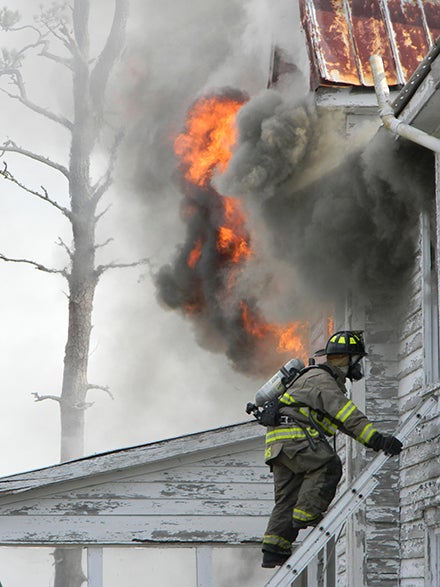Fire safety aligns with Daylight Savings Time
Published 7:48 pm Thursday, March 7, 2019

- H
The destruction of a home is devastating; the loss of personal belongings — memories, photos and more — can be even more so.
In just two minutes, a fire can become life-threatening. In five minutes, a residence can be engulfed in flames, according to ready.gov, the website of the national public service campaign to educate American about disasters.
With Daylight Savings Time going into effect this Sunday, officials are not only informing people to set their clocks back, but encouraging them to check their smoke alarm batteries.
“My No. 1 priority would be to have working smoke alarms on all levels of the house and in sleeping areas,” said Washington Fire Chief Robbie Rose.
Rose has been with the Washington Fire Department for 30 years; for two years before that, he was a volunteer firefighter.
“You know, 30 years ago the frequency (of house fires) was higher than what is now,” Rose said.
Rose attributes much of the lower incident of house fires to changes in building codes and education of the public about fire safety, including starting that education at a young age — teaching schoolchildren how to get out of a structure that’s on fire, how to “stop-drop-and-roll” and create an escape plan for the whole family before a fire emergency.

ESCAPE PLAN: What to do in case of fire? Create an escape plan now and make sure to check all smoke alarm batteries and the age of the batteries—they’re only good for about 10 years. (Vail Stewart Rumley/Daily News)
But the advice to change out batteries on smoke alarms this time of year should be expanded, Rose said.
“It’s not only changing the battery, it’s checking the age of it, because those things are only good for about 10 years,” Rose said.
Newer generations of alarms are a combination of smoke and carbon monoxide alarms, and often come with a long-life battery that will last as long as the unit lasts.
“That is kind of taking out the element of relying on people to change out the batteries,” Rose said. “Check them monthly with the little test button to make sure they’re working.”
As fire chief, Rose has seen plenty of house fires over the years, and the most common source of house fires is a situation that can happen to anyone.
“The biggest thing, and it’s still pretty much nationwide, is unattended cooking,” Rose said. “Always stay in the kitchen and monitor your cooking.”
This time of year, however, as homeowners try to keep the house warm, many fires are caused by alternate heating sources— wood-burning fireplaces and stoves, electric and kerosene heaters. Most electric heater fires are caused by a heater being placed too close to something combustible, such as curtains or furniture, or being run off of extension cords. Rose said any heating source should have a clearance of at least 36 inches on all sides. With kerosene heaters, users need to be aware of not only the fire hazard, but the threat of carbon monoxide poisoning.
“Make sure you have proper equipment and make sure it’s working properly — either get it fixed or through it out,” Rose said. “Never sleep with portable heating equipment still activated.”
Other things to consider in case of fire emergency, according to ready.gov, are:
- Make digital copies of valuable documents and records like birth certificates.
- Sleep with your door closed.
- Contact your local fire department for information on training on the proper use and maintenance of fire extinguishers.
- Consider installing an automatic fire sprinkler system in your residence.





